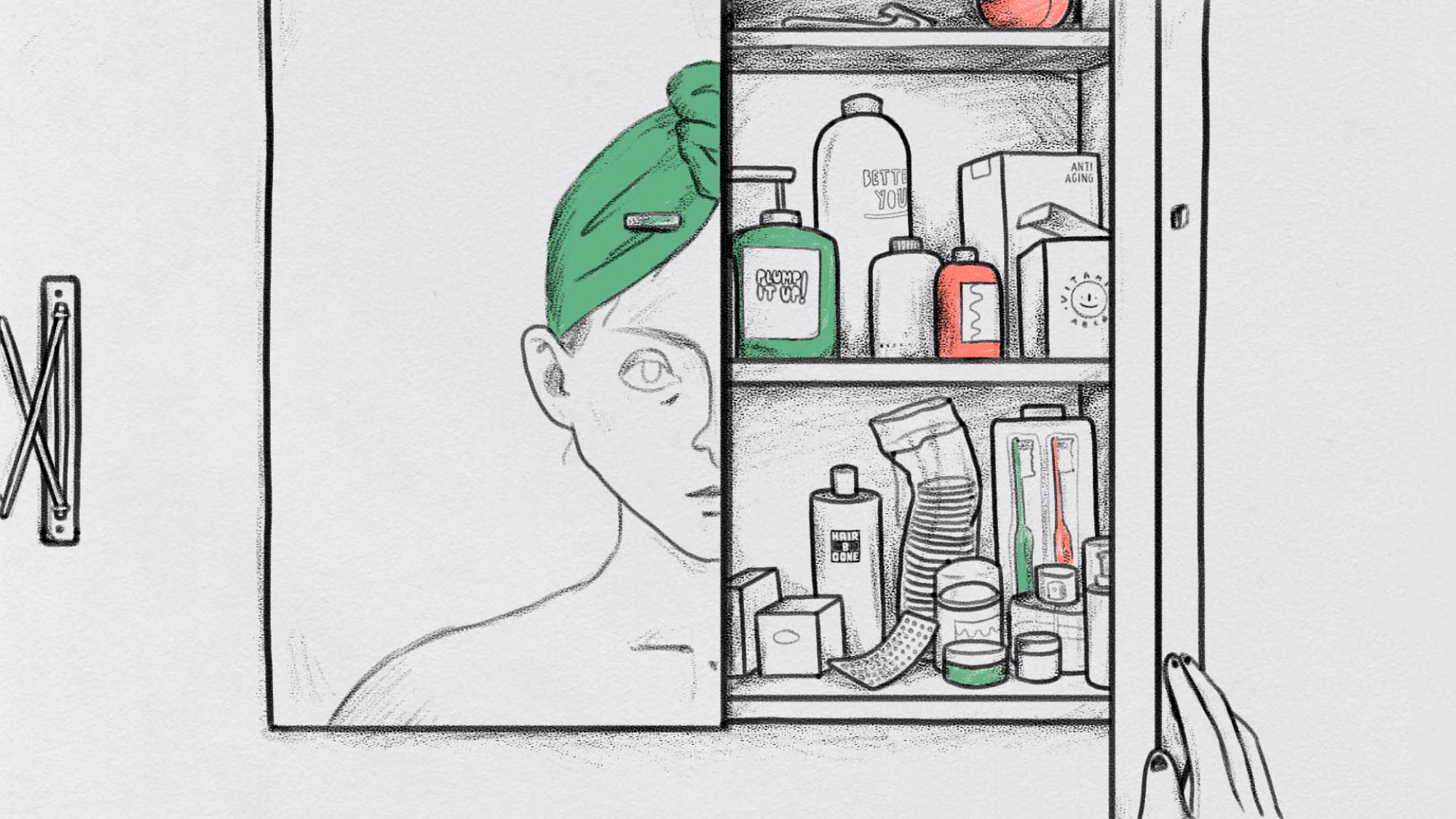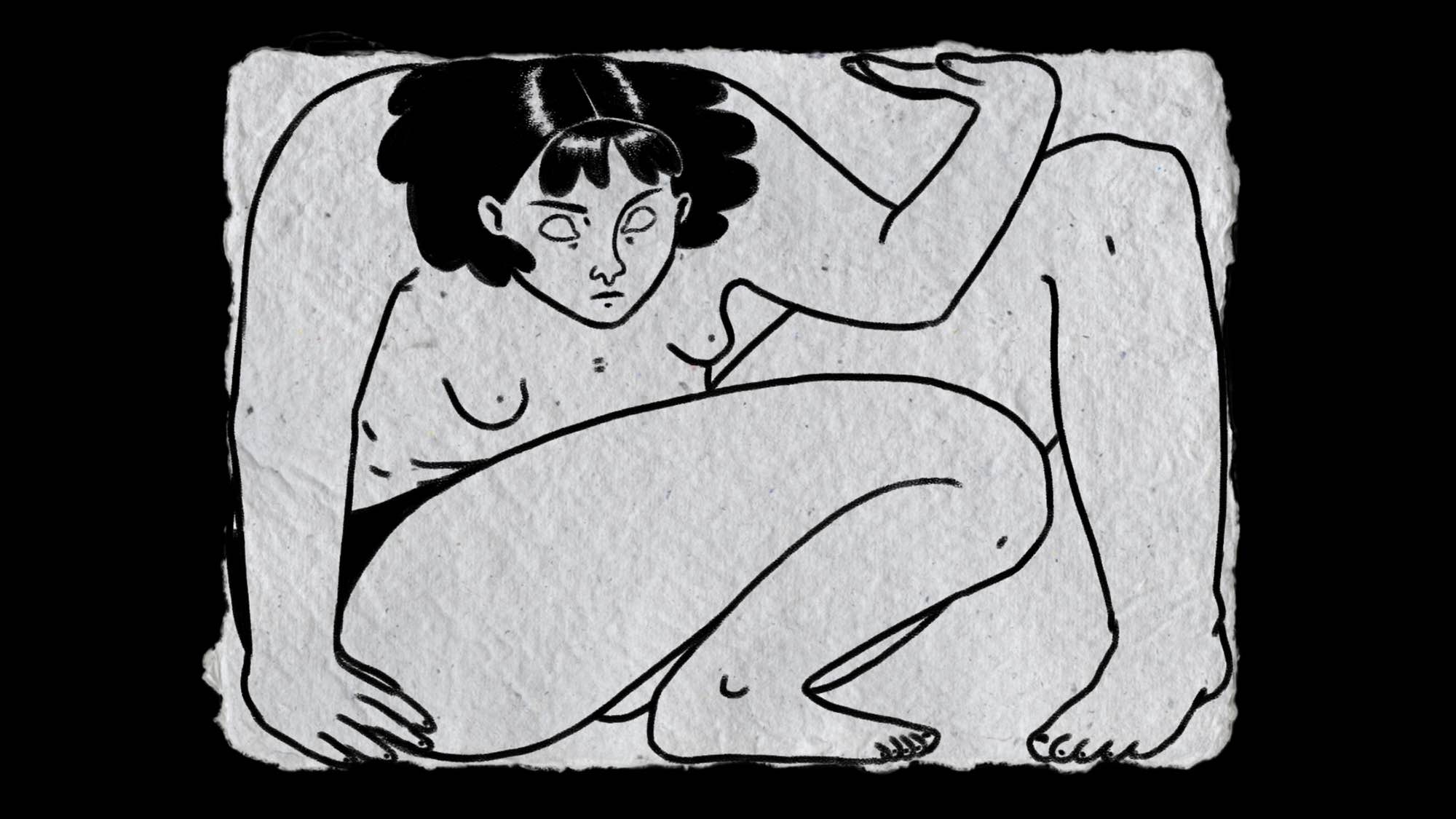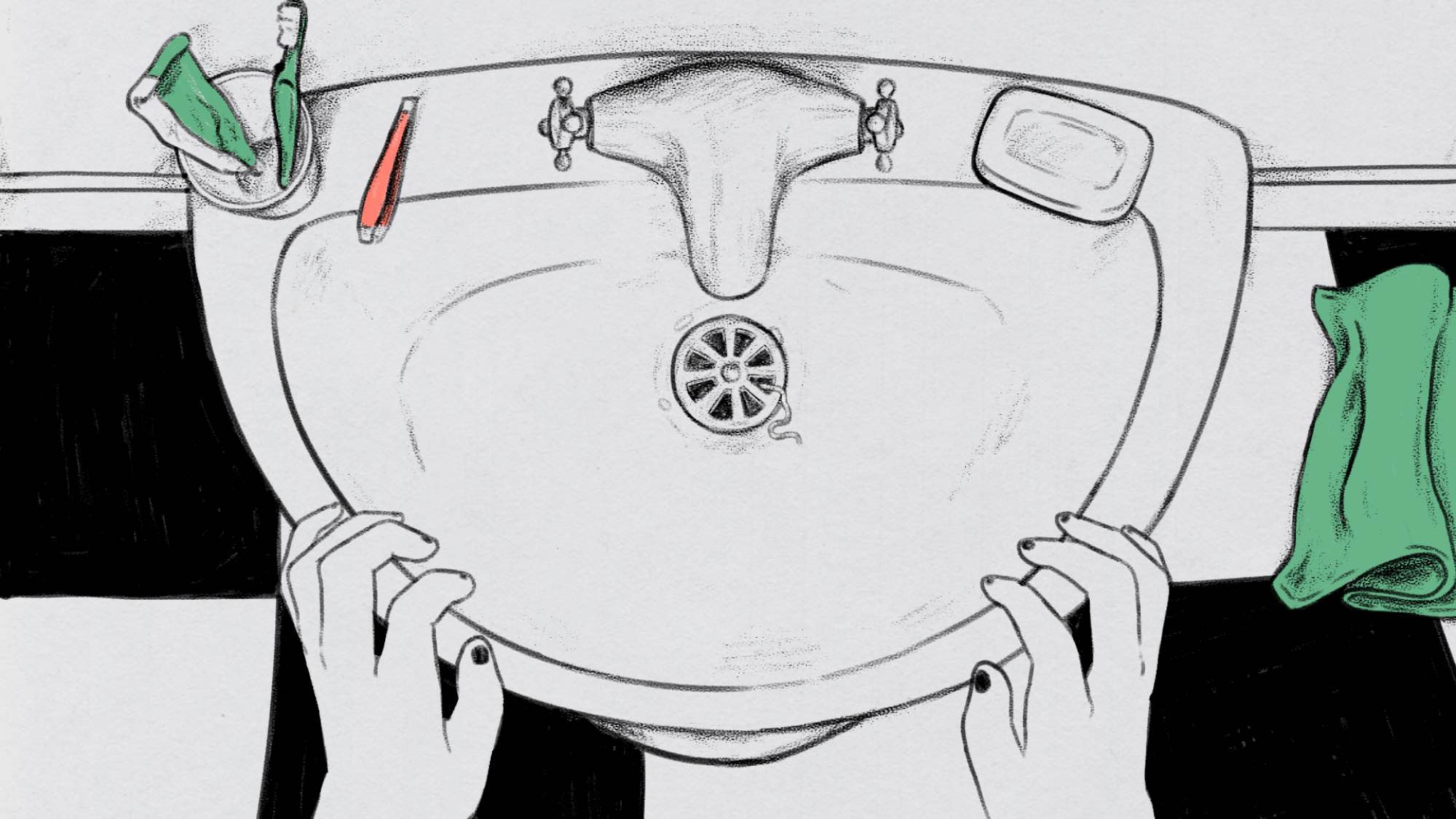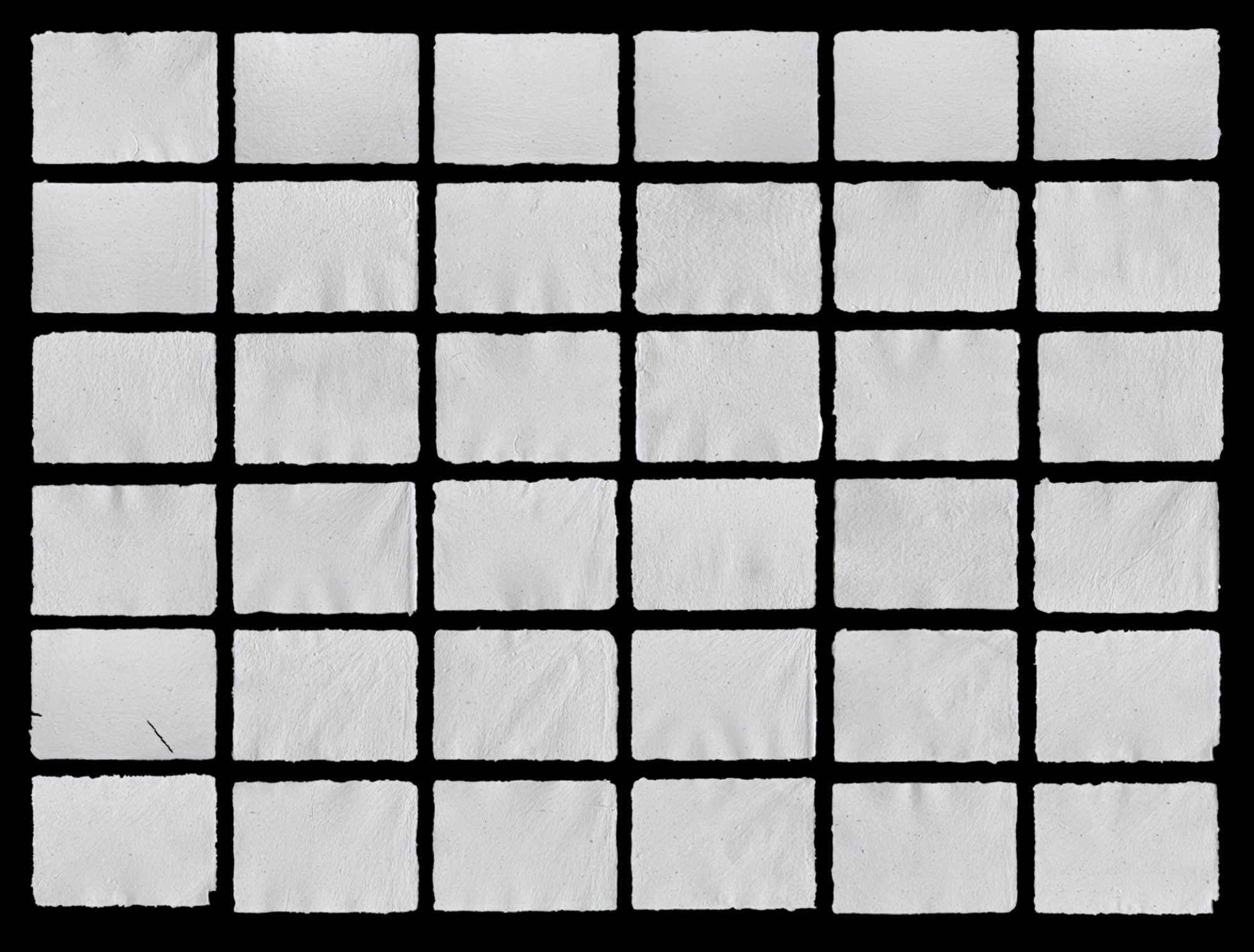
The discovery of a grey hair causes a young woman to spiral in Eilidh Nicoll’s animated short Silvering. DN first caught Nicoll’s film at NFFTY last year where it left an indelible impression on us through its stark use of blacks, whites, pinks and greens in addition to its portrayal of the universal insecurity of ageing. The story takes place in the young woman’s bathroom which becomes as visually malleable as her spiralling mindset, shape-shifting and contorting in response to her anxious projections. It’s a wonderful film and DN was delighted to catch up with Nicoll as Silvering arrives online to chat over the challenge of making the film across an eight month period of isolation, the creative benefits she found in embracing the limitations put upon her, and the immediate impact music had in making the film come to life.
I read the Silvering was made as a part of your degree, is that correct? What was the genesis for it as a project?
Silvering was made in the final year of my animation degree at Edinburgh College of Art, over the course of about eight months. The concept began with my interest in materialist animation, and the intersection of the analogue and digital. I wanted to introduce a tangible quality to my otherwise quite flat drawings, and I’d recently gotten into making recycled paper, which I loved for its messiness and unpredictability. I knew I wanted to use it in animation somehow, but it wasn’t until a friend suggested it had a skin-like texture that the ball started rolling.
That, alongside the isolation and inescapable introspection of existing in 2020, became the backdrop of the film, quite literally, from which the narrative grew. It was a way to visualise the character’s experience of insecurity and discomfort in her skin. The paper is always boiling in the background, like a constant undercurrent of anxiety, which given the chance, can eclipse everything else and leave you feeling trapped.
A lot of the filmmaking process was characterised by restraint and compromise.
How do you feel about that definition of this being a ‘lockdown film’?
Silvering has been described to me as a ‘lockdown film’, something which didn’t really occur to me at the time, but in hindsight is obvious. A sense of claustrophobia definitely informed the film, and I think it’s quite clearly a portrait of feeling trapped within yourself; one of isolation, made in isolation.

I’m guessing that it had an influence over the production methods too?
A lot of the filmmaking process was characterised by restraint and compromise. I had all these grandiose ideas, but limited time and resources forced me to rein them in and strive for simplicity. I worked it out for the most part through storyboarding, then an animatic. I followed these pretty rigidly in terms of camera angles and the sequence of shots but didn’t thoroughly plan out the action. I’m not a massively confident character animator, but I do find there’s an element of trusting the process and your intuition to convey the right movement.
I wanted to ask about the colours which are so clear and distinctive. What decision making went into that?
Colour was also something I deliberated over for a while, but ultimately my decision to use such a sparing palette was mostly practical, in the interest of saving time. But I hope that the starkness of the black and white alongside the clashing, and deliberately quite sickly, pink and green serves to heighten feelings of unease, and plays up the contrast between the character and her surroundings.


Could you walk us through your creative setup for making Silvering?
I worked almost entirely from my bedroom in my shared flat, save for branching out to the kitchen table to make paper, and a few trips to the uni library to take scans of it when restrictions allowed. My setup was pretty basic, cobbled together in a typical ‘work from home’ fashion. I had an A6 deckle and mould, which are frames that collect and strain the paper pulp, which I used to turn blended up junk mail and scrap paper into around 40 sheets of paper, drying them on j-cloths pegged to a drying rack in the hallway.
I messed around in Photoshop a fair bit to figure out how I’d move from the bathroom setting to the more insular paper box and ended up layering scans of cartridge paper with my handmade stuff to attempt to emulate a zoom and create a seamless transition from A to B. Once I had that down, I repurposed some of the paper to create some stop motion ripples by getting it damp and letting it dry over a pole, and rips, all shot on a borrowed camera. It was a bit of a pain to remove backgrounds whilst preserving the nuances of the deckled paper edges in each frame, but it was important for me to maintain the organic texture.
I hope that the starkness of the black and white alongside the clashing, and deliberately quite sickly, pink and green serves to heighten feelings of unease.
Paper aside, I animated everything in Photoshop, drawing frame by frame on a refurbished Cintiq which was a treat to myself, and a bit of a game-changer, propped up on some books. I didn’t have to do a great deal in post, or rather this stage ran concurrently with the animation itself. I’d finish animating a shot then pop it straight into the Premiere timeline in place of the corresponding part of the animatic – compositing and editing everything as I went. It was just a case of shifting around the timings as things came together, relying on boils and holds where I felt necessary.

Was this a completely solo project or did you bring in collaborators to get it over the finish line?
I only really felt the film come to life though when I began collaborating with Composer Carla Sayer and Sound Designer Hervé Girardin. We didn’t ever meet face to face during production despite being in the same city, so it was a case of sending lots of WIPs back and forth and chatting over Zoom, but they did an amazing job of capturing the tone I was going for. I think they struck gold with the use of unnatural, man-made sounds to illustrate and emulate organic movement, there are some recordings of roads in there, and a lot of scraping and twanging of guitar strings. I love that juxtaposition of harsh, metallic noise and the softness and wobbliness of the character’s body.
What can you tell us about life post-Edinburgh College of Art and what you’re working on at present?
Postgraduate life has been a bit hectic. I taught animation workshops for kids for a bit before joining Lupus Films on their upcoming feature, which was a brilliant first experience of working in an animation studio. Since then, I’ve been freelancing alongside working with my good friend and flatmate Izzy on some commercial and passion projects under the name Flat Rascal. I’ve also been lucky enough to meet some wonderful filmmakers over the course of Silvering’s festival run, one of whom I’m going to be collaborating with on a live action/animation hybrid short. Trying to juggle various projects while developing my own ideas and practice is tricky, but I’m excited to see what the future holds!


